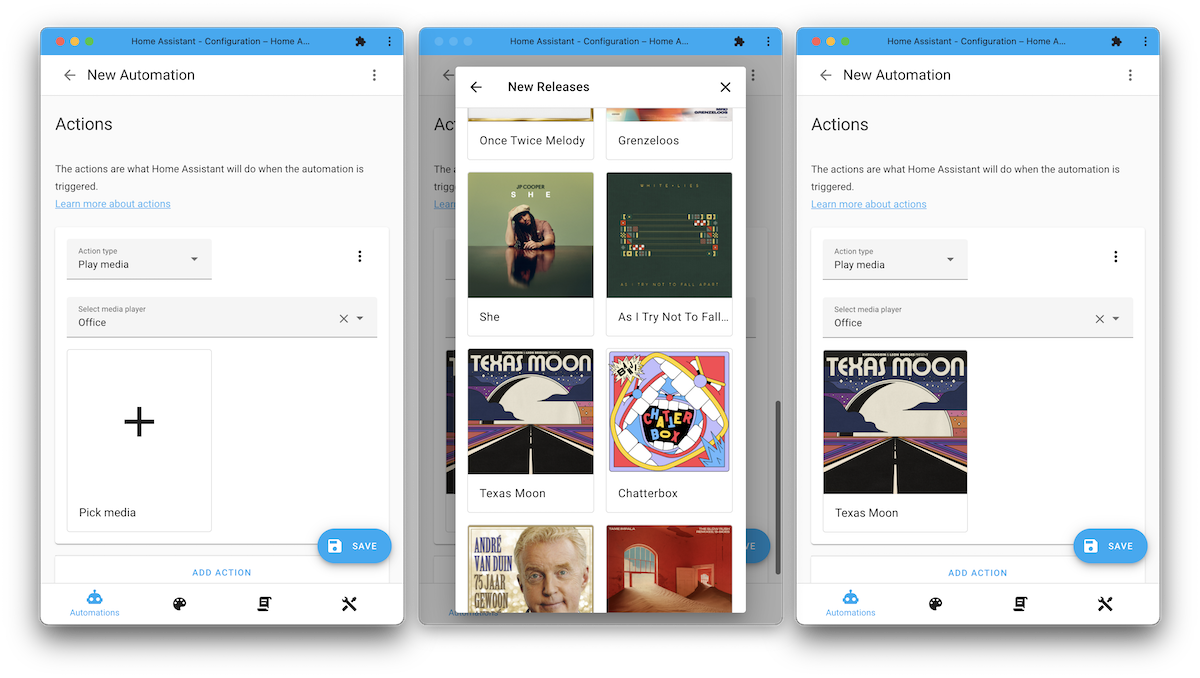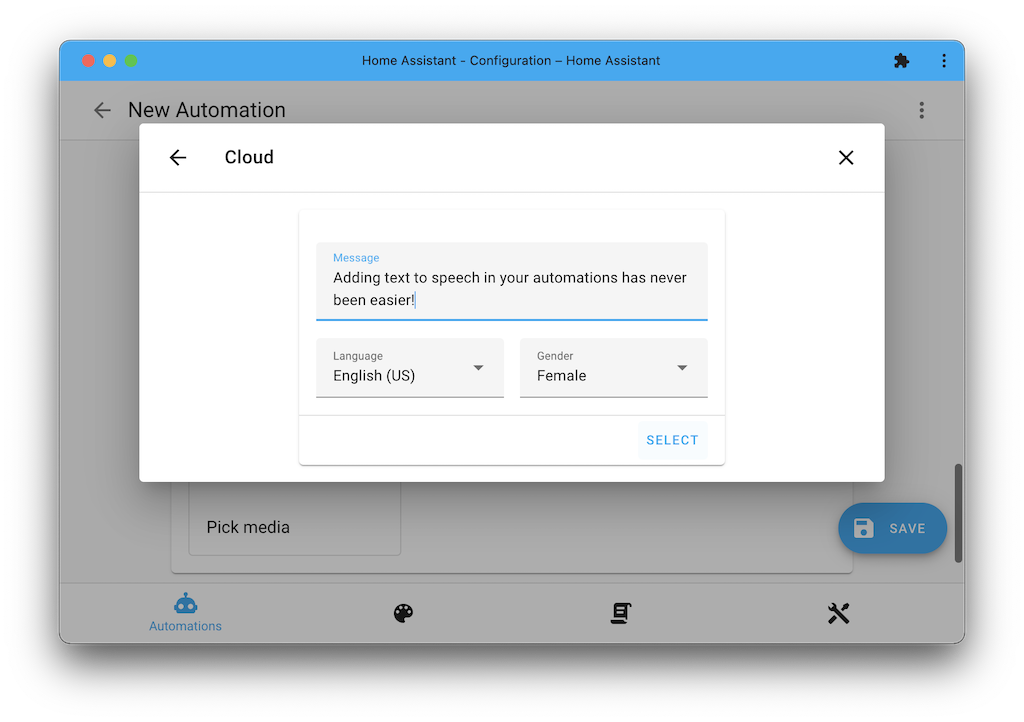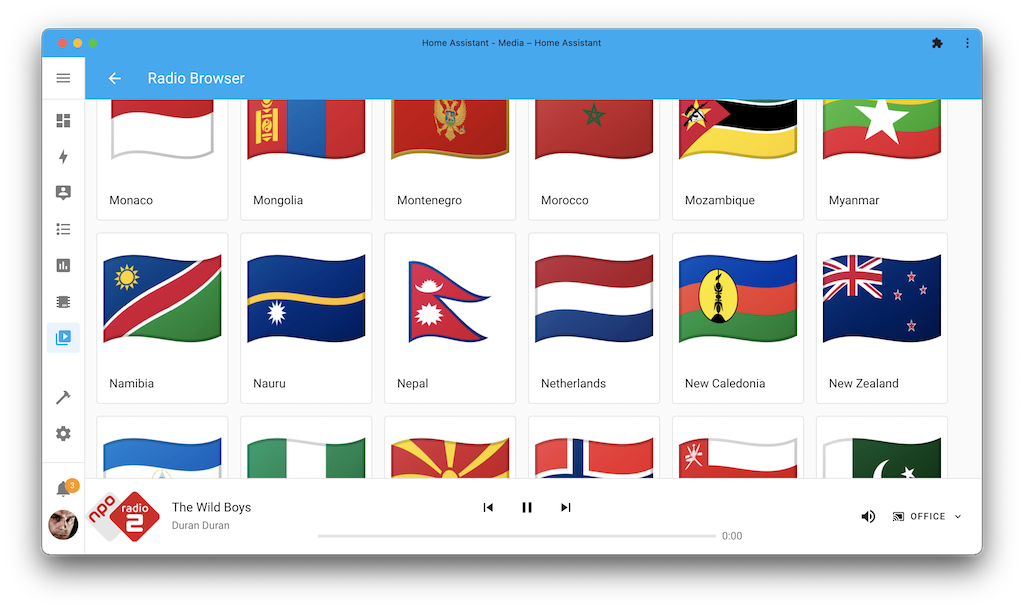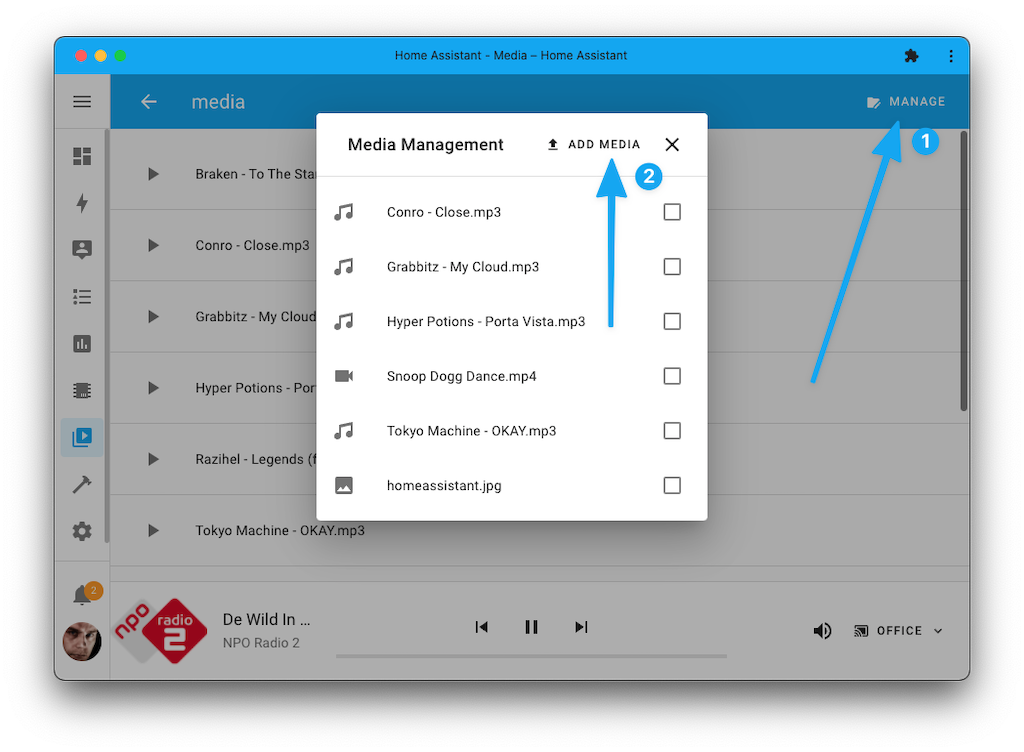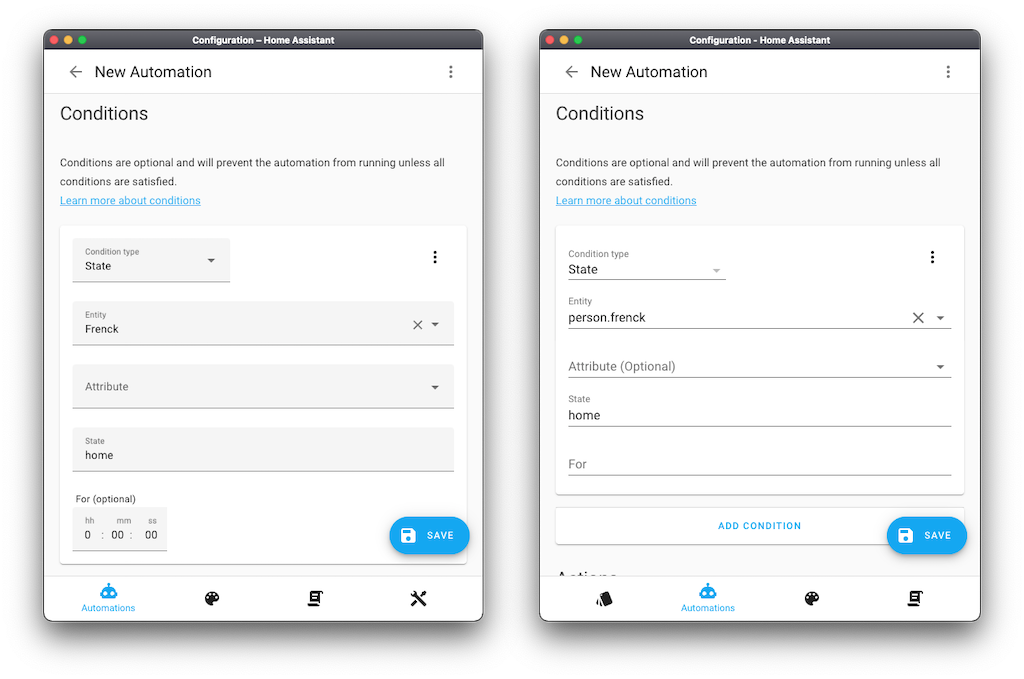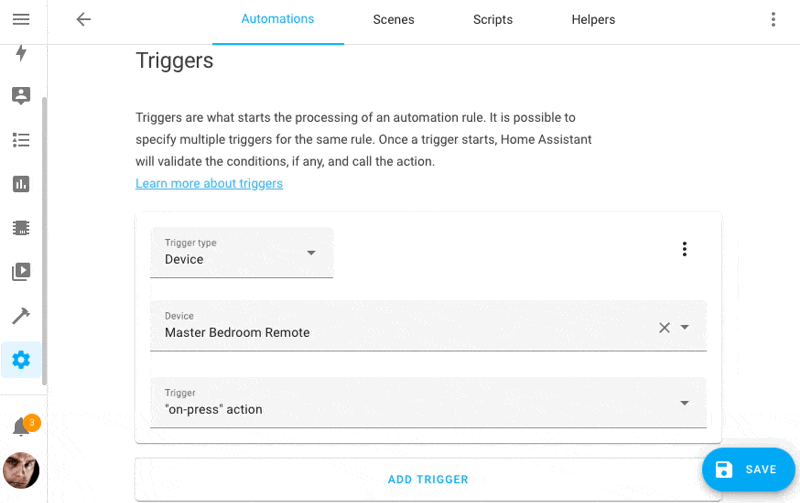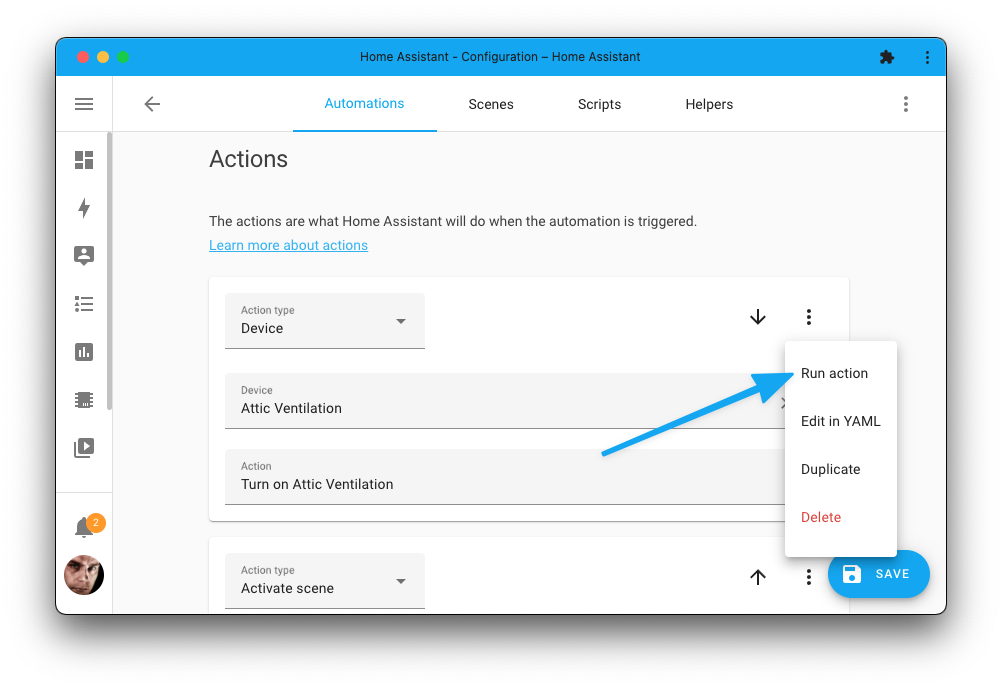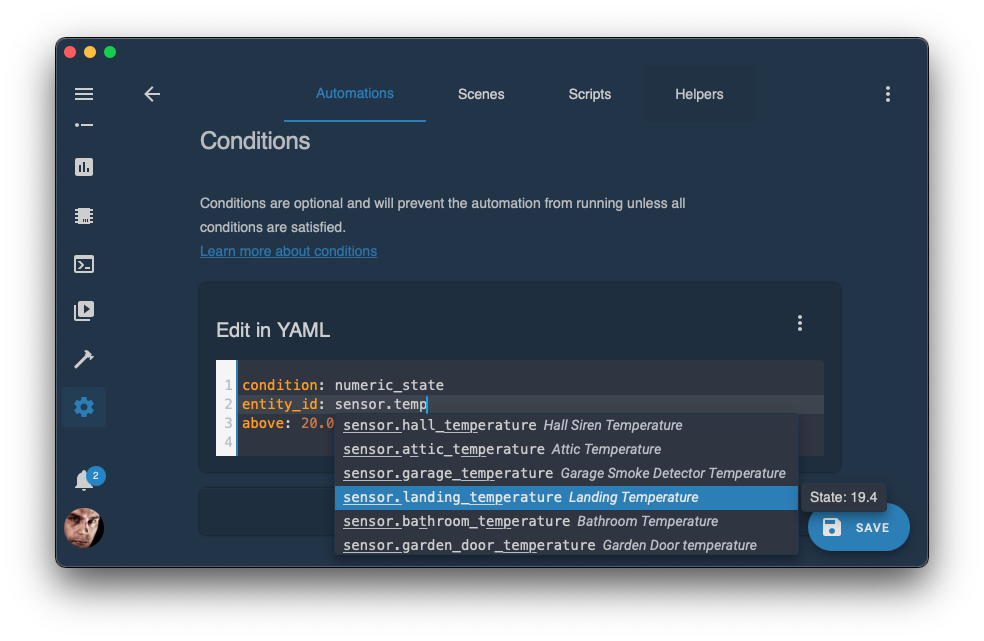Did you know that today – March 2nd – in 1949, the first automatic street
light was lit in New Milford, Connecticut, USA? Seventy-three years later, we
automate our entire homes 😎
Home Assistant Core 2022.3! And this release has a different and fresh “tune”
to it! Yes, pun intended as this release brings tons of improvements
involving media.
And what is so cool about it? It is not just about browsing media,
it is even more about using it! Using media allows us to make the automations
in our home more “personal”.
For example, having our favorite radio station playing when we get home
or broadcasting announcements and sound bites to our speakers to notify
us of stuff happening in and around our home. (I really need to install that
camera at the front door now 😅.)
What are you using media for?
Enjoy the release!
../Frenck
Índice
The Home Assistant Newsletter
We realize you might like email more than watching this blog, our Twitter,
or notifications in our Discord chat to stay on top of the latest Home Assistant news.
In that case, you might like to sign-up for our newsletter instead! We’ll
send you a new email once a month when a new release drops with the release’s highlights
and interesting things we found in our community.
Our newsletter is free of any analytics and tracking. The
sign-up is below, and we have enabled double opt-in to ensure no emails
are sent if users don’t want them.
Sign up for the Home Assistant newsletter
Media Selector and the new “Play media” action
This release brings a new media selector and a “Play media” action.
These make it super easy to use media in your automations and scripts.
Choose the “Play media” action when creating an automation, select the media
player you’d like to play something on, and next… just browse and pick the
media that you want it to play! Done! 🚀
Have you ever wanted to play your front door camera stream on your television
when the doorbell rings? Well, this is now very possible with this update.
Check out this video on how to set that up in only 1.5 minutes. 🤯
More media sources!
Of course, the above-shown “Play media” action and selector is incredible. But,
you’d need some media to select! We already supported local media
and things like Spotify, but wouldn’t it be cool if we had more!?
So, this release will bring in a bunch of new media sources.
Your Cameras! Your Lovelace Dashboards! You can just pick one of your cameras
or Lovelace dashboards and “Play” them on a supported device
(like a Google Nest Hub or television). But also text to speech!
But that’s not it; we also have new integrations adding new media sources.
This release adds the DLNA Digital Media Server and Radio Browser
integrations that allow the use of their sources with your media players.
You can browse and listen to thirty thousand radio stations from all
around the world. But what is even cooler is that with the new “Play media”
action in automations, you can just select your favorite radio station to be
playing when, for example, you arrive home!
Adding the Radio Browser to your Home Assistant instance is as easy as clicking
the My Home Assistant button below. No other setup prerequisites, logins, or API
keys are need.
Upload your media straight from the browser
Getting your media files (pictures, images, soundbites, music) into your
local media folder required you to use the
Samba add-on (or something
similar).
Can we improve this experience? Sure we can!
This release adds initial support for local media management straight from the
Home Assistant frontend, allowing you to upload and remove files directly.
UI Upgrades
We have been working hard on upgrading the Home Assistant frontend to use
Material Web Components (MWC) everywhere, saying goodbye to our old
(and deprecated) paper style.
This allows our frontend to be up-to-date with the latest features and the
latest style. As you’ll notice, these elements have a different look from the
older style, so don’t be alarmed if your inputs look slightly different.
Updating to MWC gives us many new opportunities for the future and makes
Home Assistant more accessible, for example, when using a screen reader.
The screenshot above shows the new MWC styling on the left and the previous
paper styling from an older Home Assistant version on the right. The styling
change mainly impacts input fields look and feel.
Triggered!
When working an automation, triggers now show live in the UI when they are
triggering, allowing you to validate you set it up correctly.
In this little animation below, the remote is pressed a couple of times.
The automation editor will show the “TRIGGERED” bar.
Each time the trigger triggers it will be indicated in the UI.
Additionally, you can now also trigger each individual action in your automation
to test if the action you are creating runs as expected:
Entity ID autocompletion
Our YAML configuration and Jinja templates used in, for example, automations,
scripts, and frontend dashboards can be a really powerful customization
tool. You can definitely appreciate this feature if you use our code editor
in the frontend at times.
Thanks to @kubawolanin, we now have entity ID autocompletion when using
the built-in code editor in the Home Assistant frontend 😎.
Just start typing an entity ID, and the code editor will try to suggest an
entity ID and show the selected entity’s current state.
Theme: Waves by Tim Cowell.
This works when you are configuring your Lovelace cards,
creating advanced template conditions in your Automations,
and even if you are testing out your Jinja-template in the
template developer tools.
Click the My button below to test it out on your Home Assistant instance:
Other noteworthy changes
There is much more juice in this release; here are some of the other
noteworthy changes this release:
- ESPHome added support for locks! Thanks, @kbickar
- The HomeKit Controller integration has improved support for the Ecobee
thermostats. Thanks, @Jc2k! - When playing media in the media browser, the media player bar in the bottom
will now have a volume control, thanks @balloob! - Thanks to @kubawolanin, you can now filter and search the
Home Assistant logs! - When selecting a date in the frontend, a beautiful new date picker is shown.
Thanks, @bramkragten! - The IKEA TRÅDFRI integration has been worked on by @ggravlingen and
@martinhjelmare. Lots of stability issues have been resolved, battery
sensors for blinds have been added, and also support for the air purifier
has been extended with sensors for air quality and filter time left. -
@rfleming71 added button entities to the OctoPrint integration, allowing
you to control to resume, pause or stop a 3D print. - The following integrations have added an option to set a
unique_idin their
YAML configuration; If set, you can customize those entities in the UI. -
@starkillerOG has been chewing on NETGEAR, adding traffic sensors,
a reboot button, but also switch to allow/block devices. Awesome! - Don’t be alarmed now, but @jbouwh added support for Sirens to MQTT!
-
@rubenverhoef also dove into MQTT and added additional command templates
for MQTT lights. - The Renault integration added HVAC, door, and lock sensors, thanks @epenet
-
@bdraco added support to HomeKit for controlling the fan and oscillating
of fans in climate entities. Nice! - The GitHub integration became much more efficient and now has many more
sensors available! Thanks @ludeeus and @timmo001, that is just amazing! -
@kbickar hasn’t been sleeping much as he modernized the SleepIQ integration,
adding a bunch of new entities in the process. - If you have a Samsung Smart TV, @epenet added support for showing your
installed TV apps as media sources! - Thanks to @chemelli74, you can now control the valves of those brand new
Shelly TRVs!
New Integrations
We welcome the following new integrations this release:
Integrations now available to set up from the UI
The following integrations are now available via the Home Assistant UI:
Need help? Join the community!
Home Assistant has a great community of users who are all more than willing
to help each other out. So, join us!
Our very active Discord chat server is an excellent place to be
at, and don’t forget to join our amazing forums.
Found a bug or issue? Please report it in our issue tracker,
to get it fixed! Or, check our help page for guidance for more
places you can go.
Are you more into email? Sign-up for our newsletter to get
the latest news about features and things happening in our community straight
into your inbox.
Breaking Changes
Below is a listing of the breaking change for this release, per subject or
integration. Click on one of those to read more about the breaking change
for that specific item.
This breaking change does NOT apply to users of the Z-Wave JS integration.
This is a breaking change notice regarding the older Z-Wave and OpenZWave
integrations, which both have been previously deprecated.
This release of Home Assistant Core 2022.3 will be the final release that
provides these integrations. Both the old zwave and ozw integrations
are pending removal for Home Assistant Core 2022.4.
The ozw integration has been deprecated before as the upstream
projects we depends on, for e.g., libraries and add-on containers,
are no longer maintained.
As Home Assistant is moving towards support for Python 3.10, it became clear
that the old zwave integration isn’t compatible and thus is going to
be removed for that reason.
If you are still running your Z-Wave network on either of those deprecated
integrations, we highly recommend migrating
to the newer Z-Wave JS integration after upgrading to this release.
The new Z-Wave JS will provide you with a modern, more feature-rich,
maintained, and stable Z-Wave stack for the future.
See our documentation for a guide on
Migrating from previous Z-Wave implementations.
The previously deprecated YAML configuration of the ASUSWRT
integration has been removed.
ASUSWRT is now configured via the UI, any existing YAML
configuration has been imported in previous releases and can now be safely
removed from your YAML configuration files.
(@ollo69 – #65904) (documentation)
The AVM FRITZ!Box Call Monitor integration previously migrated to configuration
via the UI. Therefore, configuring the AVM FRITZ!Box Call Monitor integration
via YAML configuration has now been deprecated and will be removed
in a future Home Assistant release.
Your existing YAML configuration has been automatically imported and
can be safely removed from your YAML configuration.
(@tkdrob – #61762) (documentation)
A typo was fixed in the ebusd integration for monitored condition
WaterPressure. It is incorrectly named “WaterPreasure” in the code.
The documentation represents the correct value.
(@nklebedev – #66355) (documentation)
Elexa Guardian no longer accepts the previously deprecated entity_id parameter
in service calls; automations and scripts calling those services now require
a device_id parameter.
(@bachya – #65484) (documentation)
The freebox.reboot service is now deprecated and replaced by a dedicated
reboot button entity; please use that entity to reboot the Freebox instead.
(@epenet – #65501) (documentation)
The native IKEA Tradfri groups are now deprecated, and this feature will be
removed from the integration in a future release.
Tradfri groups rely on sending frequent requests (polling) to the gateway to
check the states of the groups. Continuously polling the gateway causes
stability issues of the gateway, sometimes causing it to crash and requiring
a restart. We propose using light groups instead.
Configuring IKEA Tradfri via YAML configuration has been deprecated and will
be removed in a future Home Assistant release. Any remaining YAML configuration
has been automatically imported for a long time and thus can be safely
removed from your YAML configuration.
(@ggravlingen – #65226) (documentation)
The International Space Station (ISS) integration migrated to configuration
via the UI. Configuring International Space Station (ISS) via YAML configuration
has been deprecated and will be removed in a future Home Assistant release.
Your existing YAML configuration is automatically imported on upgrade to this
release; and thus can be safely removed from your YAML configuration
after upgrading.
(@DurgNomis-drol – #64987) (documentation)
MQTT binary sensors, lights, fans, humidifiers, and switches can now have
an unknown state in case the state is unknown.
This change was made to make the MQTT entities more consistent with
how these entities behave in other parts of…
Visto en


